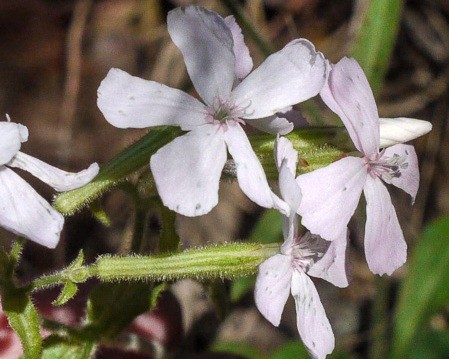Sticky catchfly
(Silene caroliniana)

Description
Silene caroliniana, the sticky catchfly or wild pink, is a spring flowering perennial forb with pink flowers, which is native to the Eastern United States. It is listed as an endangered species by the state of Florida. It is found growing in habitats such as dry rocky or sandy forests, barrens, and outcrops. The corolla varies in color ranging from a dark pink to white. When in bloom they are visited by pollinators, like large bees, bee flies, and hawkmoths. Silene is a genus of flowering plants in the family Caryophyllaceae. Containing nearly 900 species, it is the largest genus in the family. Common names include campion and catchfly. Many Silene species are widely distributed, particularly in the northern hemisphere. Members of this genus have been the subject of research by preeminent plant ecologists, evolutionary biologists, and geneticists, including Charles Darwin, Gregor Mendel, Carl Correns, Herbert G. Baker, and Janis Antonovics. Many Silene species continue to be widely used to study systems, particularly in the fields of ecology and evolutionary biology. The genus has been used as a model for understanding the genetics of sex determination for over a century. Silene species commonly contain a mixture of hermaphroditic and female (or male-sterile) individuals (gynodioecy), and early studies by Correns showed that male sterility could be maternally inherited, an example of what is now known as cytoplasmic male sterility. Two independent groups of species in Silene have evolved separate male and female sexes (dioecy) with chromosomal sex determination that is analogous to the system found in humans and other mammals. Silene flowers are frequently visited by flies, such as Rhingia campestris. Silene species have also been used to study speciation, host-pathogen interactions, biological species invasions, adaptation to heavy-metal-contaminated soils, metapopulation genetics, and organelle genome evolution. Notably, some members of the genus Silene hold the distinction of harboring the largest mitochondrial genomes ever identified. Silene was originally described by Linnaeus. Silene is the feminine form of Silenus, a Greek woodland deity. Divisions of the genus into subgenera or sections before 2003 do not seem to be well-supported by molecular evidence.
Taxonomic tree:







